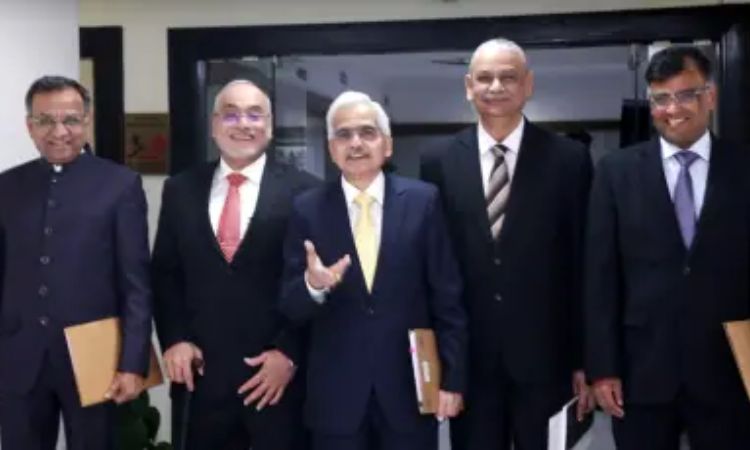Reserve Bank of India Monetary Policy Meeting Likely to Maintain Repo Rate at 6.50%, as indicated by a poll of economists. Factors contributing to this decision include higher-than-expected GDP growth, easing retail inflation, and the scaling down of rate hikes by central banks in advanced countries.
The RBI’s focus on liquidity management and concerns about the impact of the monsoon on food inflation also play a role. Market participants are eagerly awaiting the RBI’s comments on these matters.

At its upcoming meeting on June 8, the Reserve Bank of India (RBI) is expected to keep its benchmark repo rate unchanged at 6.50%, according to a poll of 14 economists conducted by FE and other media outlets. Several factors contribute to this anticipated rate pause, including a higher-than-expected gross domestic product (GDP) growth of 6.1% in the fourth quarter of FY23, a decline in retail inflation to an 18-month low of 4.70% in April, and the expectation of further inflation correction in May.
The recent decision by central banks in advanced countries to scale down rate hikes and the likelihood of future rate pauses in those countries also influence the RBI’s stance. Sujan Hajra, Chief Economist and ED at Anand Rathi, emphasizes this aspect, noting the impact of global rate trends.
During the previous MPC meeting, the committee unanimously voted for a pause, while external member Jayanth Varma expressed dissent regarding the unchanged stance of “withdrawal of accommodation.” Varma argued that the language used does not align with the fact that no further accommodation withdrawal is necessary, as the repo rate had already been raised to the same level as at the beginning of the previous easing cycle in February 2019.
El-Nino Impact-:
Regarding inflation, Aditi Nayar, Chief Economist at Icra Ratings, expects a further easing to 4.5%-4.7% in May-June, with a Q1FY24 print of 4.7%. This projection falls below the MPC’s forecast of 5.1% for the same quarter. However, concerns about the monsoon may dissuade the MPC from revising its inflation forecast for FY24. The potential impact of El Nino in the latter half of the monsoon season could affect crop yields and food inflation, posing a risk to the CPI inflation trajectory in H2 FY2024.
Liquidity Management-:
The central bank’s approach to liquidity management will be of keen interest to market participants, according to the majority of economists polled. Recent volatility in overnight rates has raised questions, and the RBI’s comments on liquidity management are eagerly awaited. Anubhuti Sahay, Head of South Asia Economics Research at Standard Chartered Bank, emphasizes the importance of clarity on the evolution and management of liquidity, alongside the positive response to the RBI’s recent announcement on variable repo rate (VRR).
Gaura Sengupta, India Economist at IDFC First Bank, anticipates the maintenance of liquidity conditions to keep the weighted average call rate close to the repo rate. Despite the current stance of accommodation withdrawal, the RBI has engaged in two-way operations such as VRR auctions and variable reverse repo rate (VRRR) auctions. Liquidity conditions remain a concern, with tight liquidity prevailing in the market. While the RBI may relax liquidity to some extent in the upcoming monetary policy, any repo rate cuts are expected in Q3 or Q4, according to Deepak Jasani, Head of Research at HDFC Securities.
This balanced approach to the monetary policy decision is based on factors such as GDP growth, inflation trends, global rate movements, and liquidity management, while also considering the potential risks associated with the monsoon and food inflation.














